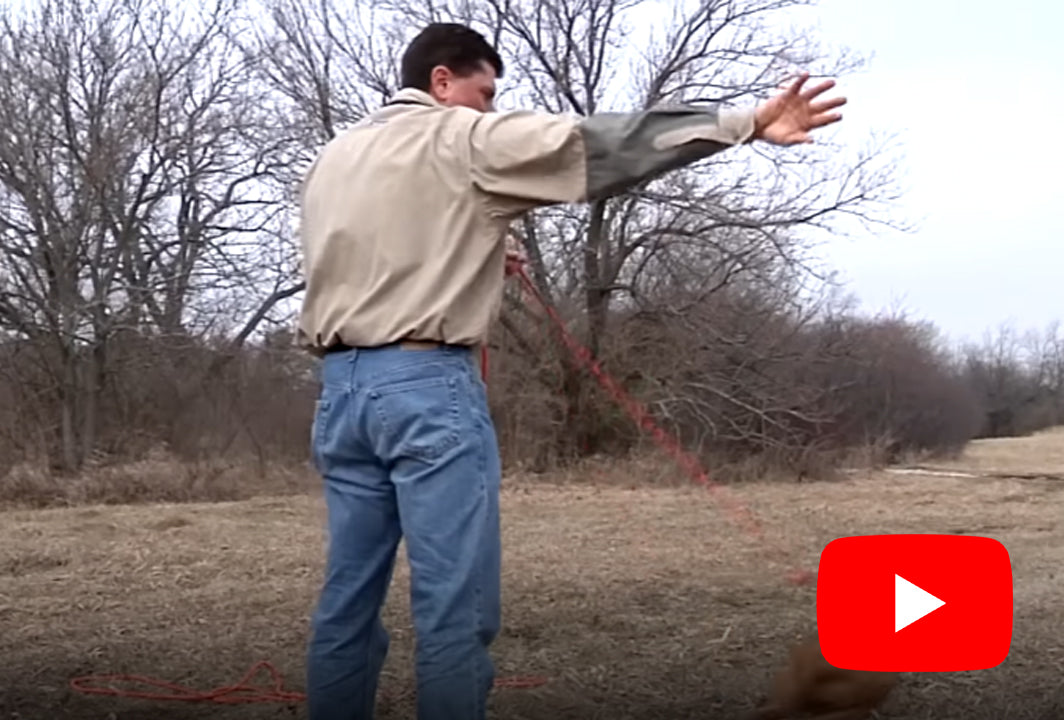How to Teach Hand Signals and Hand Casting Drills to Your Dog
There are many benefits to communicating with your dog using hand signals over verbal commands!

Why are hand signals so important for dogs to learn? Dogs actually understand non-verbal communication better than verbal communication. Training your dog to communicate with hand signals has several advantages, especially for a hunting dog who might need to understand commands at a distance so far they can no longer hear you.
Why It’s Important to Teach Your Dog Hand Signals
Dogs respond to body language more effectively than verbal commands. In fact, canines are able to process non-verbal communication faster and more accurately than typical spoken commands. Learning how to communicate with your dog using hand signals is an incredibly valuable and reliable mode of communication.
Hand signals are important for your dog to know if you are ever in a crowded, noisy situation, and your dog may not be able to hear you well. Or if your dog eventually goes deaf, this is a valuable communication tool for them to learn.
Imagine this: you’re goose hunting in a field and you cripple a bird and watch it sail off. Ideally, your dog watches the bird, goes when sent and follows after the goose but loses its line due to the rolling hills, change in grasses and more geese in the sky caught their attention.
At this point, the dog is too far to hear you cast him and needs to hear a whistle toot, look for your signal and take the correct cast toward the area of the fall. Does that scenario ring a bell? Yes, we’ve all been in a similar situation where we either had a dog capable of doing this, or we wished we did.
Taking the time and effort to teach your dog hand signals is something you won’t regret.
How to Teach Your Dog Hand Signals with Casting Drills and Retrieves
The best way to teach your dog directional hand signals is by using casting drills and retrieves. You’ll use the hand signal while throwing the object. This helps establish your dog’s confidence that the hand signal itself dictates which direction he’s going to go to retrieve.
What Are Casting Drills?
Casting is when you send your dog in the direction of your choice while he is at a distance from you. This is incredibly valuable to teach your hunting dogs, so you can effectively communicate with them during the hunt without having to yell commands and risk them not hearing you.
After you spend some time practicing this, your dog should start to show a solid, good, and consistent association with the direction that you're moving your hand. In other words, he begins moving in that direction as soon as you move your hand. Then you can go to the next step, which is steady casting.
Steady Casting Drills
With a steady cast, your dog will stay in position until you move your hand. So, when you throw your object, it’s important for your dog to stay still until you give him the hand and verbal command.
If at any time your dog goes in the wrong direction, just stop them with a long lead. Simply slow the dog down with the lead, and don't let them go get the object you’re throwing. Have your dog sit while you go pick it up and start over.
Once your dog becomes consistent with this drill, don't make it any more complex than it needs to be! The point is, you want your dog to be very confident in taking hand signals. At this point, your dog is really not capable or doesn't have the tools set up yet to be capable of having it any more complex.
Four Different Types of Casts
There are the four common hand signals that you will use most often to communicate with your dog. It will be best for your dog if you train him on these signals using this exact order. The four main casts are the back cast, the left-hand cast, the right-hand cast, and the recall.
The Back Cast
The back-cast hand signal communicates to your dog that they need to travel away from you in the direction you are facing. So, back for them (since they’re facing you), forward from where you are standing.
The hand signal for this is just raising your arm straight up in the air. You can tweak it, however, whichever way works best for you and your dog. Just make sure that whatever you do, the signal is very clear to your dog.
The Left-Hand and Right-Hand Cast
This hand signal is pretty simple and straightforward. Just hold your arm in the direction you want your dog to go. While training, hold out your left arm as you throw your retrieve object and give out the verbal signal so your dog fully understands.
The same goes for the right-hand cast. This is the same process, just reversed, using your right arm. Eventually, you won't need to give the verbal command and he will know what to do just by seeing your outstretched arm.
The Recall Cast
This is the most important command you will teach your dog. This is crucial to teach him, as the recall hand signal brings your dog back to your side. This is what makes the other hand signals so effective, because your dog obeys to come back to you. For this signal, just place your arm stiffly by your side, keeping your hand straight.
Your dog may get distracted when he is originally being taught this cast; however, always make sure to praise your dog for coming to you, no matter how long it takes.
Good Training Practices
To help enforce these training practices, make sure your dog is motivated and reinforce correct behavior by rewarding him with treats or other ways. Make sure your dog fully understands a command before you move on to teaching him a new hand signal.
You can also start off with close distances while he initially learns the different casts, and as he becomes more confident, you can extend the distances.
Benefits of Hand Signals
Training your dog to understand hand signals is very beneficial, even for dogs that aren’t hunting dogs. Hand signals allow you to better communicate with your dog and are a method of communication with them even if they get older and go deaf someday.
The most important thing to remember while training is to only reinforce correct behavior. Even though the training may take awhile, it’s important that your dog understands the correct way to respond to your hand signals.
Training your dog always comes with uncertainty and apprehension; make sure you have the correct knowledge and methods to help your dog learn hand signals and casting calls as effectively as possible!




